No one finds it strange when fragrant flowers are adorned in the hair of beautiful young women. However, in ancient China, it was quite fashionable for men to wear flowers in their hair.
“The consort used to wear flowers for me, and it was truly beautiful.”
“Serving the lady is a natural duty; I do not dare forget this rule.”
This is a scene from the Chinese drama “The Legend of Zhen Huan”. The image of a concubine placing flowers in her hair is familiar to those who are passionate about historical dramas.
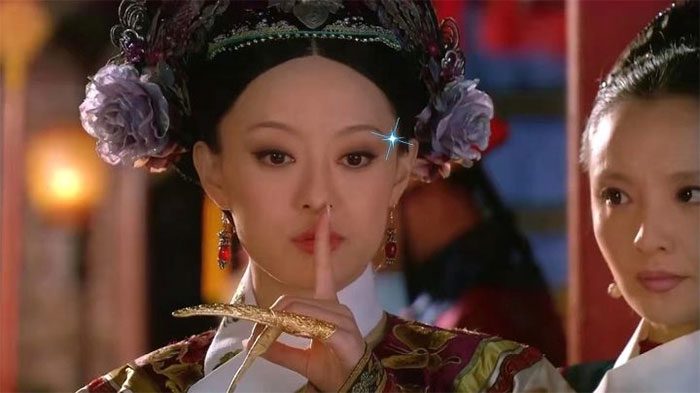
The image of Xi Guifei placing flowers in her hair in the series “The Legend of Zhen Huan.”
The use of flowers as hairpins has existed for a long time in Chinese history. According to records from the Tang-Song dynasties, when generals went to battle or those whose names were inscribed on the golden tablet were often seen wearing fresh flowers. The verse “On a spring day, flowers bloom all over the head” illustrates this notion. The accidental fall of flowers, it was believed, could beautifully enhance one’s appearance. Ancient Chinese people considered flowers falling inadvertently on the head to be a very charming image.
Over time, the practice of adorning hair with flowers started to appear in daily life and became a form of jewelry derived from nature, providing a freshness that often surpassed the beauty of metal or gemstone ornaments.
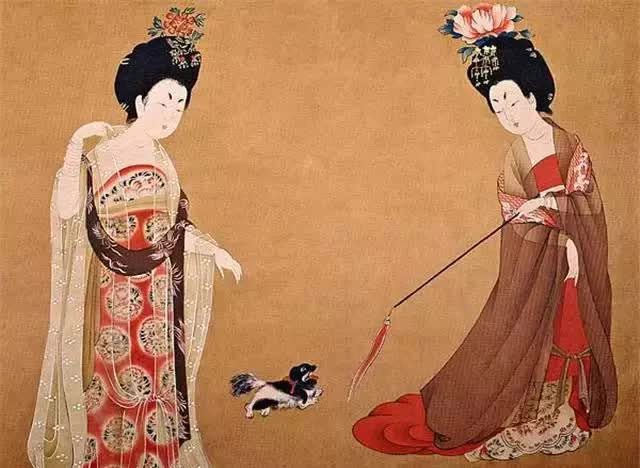
The painting ‘Women with Flower Hairpins’ from the Tang Dynasty by artist Zhu Feng.
Concubines of the Qing Dynasty exchanged beautiful flower pots and exquisite vases, as they viewed flowers as a form of aesthetics, representing beauty in life.
However, few people know that wearing flowers in the hair was a very common phenomenon in ancient China. Interestingly, it was not just women; men also had the custom of adorning their heads with flowers. Yet, with different eras came different social customs. “Men wearing flowers” was a distinct aesthetic style within the feudal society of China.
1. Wearing the twig of the osmanthus
In fact, the phenomenon of “men wearing flowers” existed before the Qin dynasty, but it was not yet widespread until the Han dynasty.
The work “Records of the Western Capital” by the poet Jia Hong of the Jin Dynasty noted: “On the 9th day of the 9th month, wear osmanthus twigs and drink chrysanthemum wine to promote longevity.” This means that at that time, it was believed that wearing osmanthus could ward off evil spirits. However, instead of placing it on their heads, they wore it at their waists or tied it to their arms.
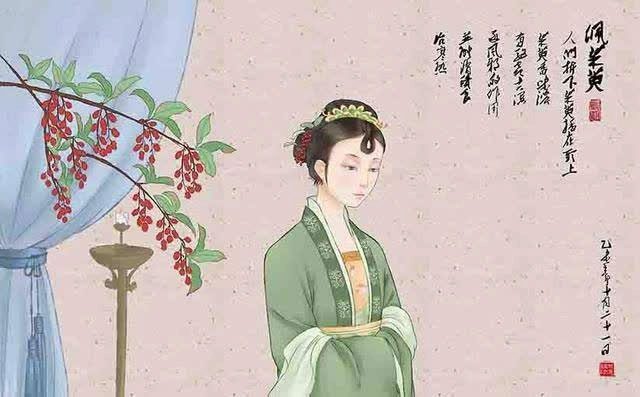
Initially, instead of wearing osmanthus on their heads, they wore it at their waists or tied it to their arms.
It wasn’t until the Jin Dynasty that people began to wear osmanthus on their heads. According to the “Geographical Records” by the famous person of the Jin era, Zhu Ce, it was recorded: “Breaking off osmanthus branches to wear on the head wards off evil spirits and fights the cold in winter.”
During the Wei, Jin, and Northern and Southern Dynasties, men adorning their heads with flowers gradually became a form of aesthetic expression.
Fan An of the Jin Dynasty and the Liu brothers, Liu Ge and Liu Yun, were handsome figures in history, holding relatively high positions. They adorned their official headwear with splendid fresh flowers, further showcasing their royal demeanor.
2. From emperors gifting flowers to commoners wearing flowers in their hair
In fact, during the Tang Dynasty, emperors would gift flowers to their courtiers to adorn their hair or heads. According to “The Chronicle of the Long View” by Wu Pingyi from the Tang Dynasty: “On the 8th of January, during the beginning of spring, beautiful flowers were given to the courtiers…”
During the reign of Emperor Zhongzong Li Xian, he summoned the young scholars to a banquet, which included Shangguan Wan’er, Li Qiao, Song Zhiwen, Liu Xian, Zhao Yanzhao, and Shen Guqi. Wu Pingyi, being the youngest, composed the most remarkable poem, thus Emperor Zhongzong rewarded him with flowers to adorn his head as a prize.

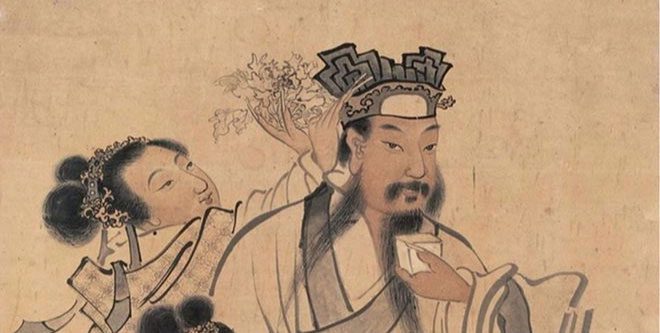
The popularity of “men wearing flowers” is related to the imperial examination system.
In addition to the emperor bestowing flowers, the popularity of “men wearing flowers” during the Tang Dynasty was also linked to the imperial examination system. After the announcement of successful candidates, the court would hold a banquet and command the two youngest scholars from the new class of candidates to ride horses and pick fresh flowers blooming in the capital, which were then distributed to other scholars. These two were referred to as “Flower Inspectors.”
Later, “Flower Inspector” became a specialized term ranking third after the top scholar and the second-ranked scholar, stemming from this historical practice.
Subsequently, the flower-wearing style of scholars spread to the common folk, and many ordinary people began to follow suit. Consequently, men wearing flowers on their heads became commonplace, and this phenomenon was frequently mentioned in the poetry of the Tang Dynasty.
For instance, the poem “Happiness Garden” by Du Mu includes the line: “At night, the drizzle washes away the dust of the streets… Don’t blame the Happiness Garden for its desolation, as the whole city is filled with men wearing flowers” (rough translation).
“The whole city is filled with men wearing flowers,” from this line, we can discern the flourishing state of “men wearing flowers” during the Tang Dynasty, to the extent that the flowers in the gardens were all picked, leaving the osmanthus trees bare and lifeless. At that time, the flowers used to adorn heads included not only osmanthus and plum blossoms but also carnations and gardenias, primarily in red and white hues.
3. “Men wearing flowers” became a formal custom in the court
After the fall of the Tang Dynasty, the Central Plains faced continuous warfare, causing great suffering for the people. Apart from a few high-ranking officials, very few common folks wore flowers. However, in regions like Wu Yue, Southern Tang, and Shu Kingdom, the custom of adorning heads with flowers remained popular due to the relatively stable lives of the people.
The flower-wearing custom flourished even more during the Song Dynasty, evolving into a type of court ritual.
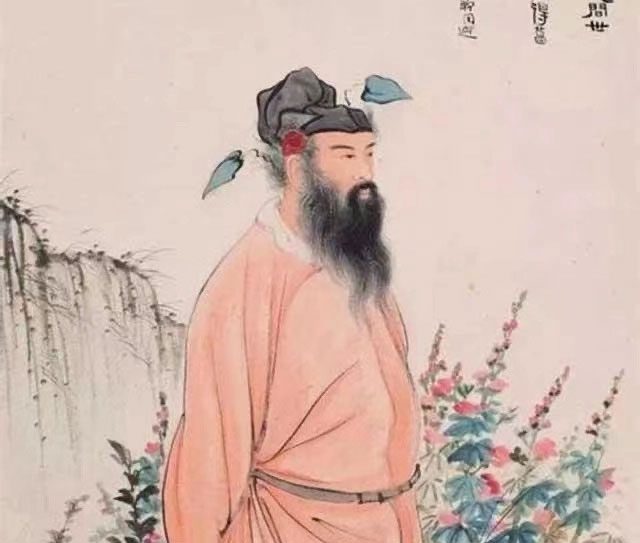
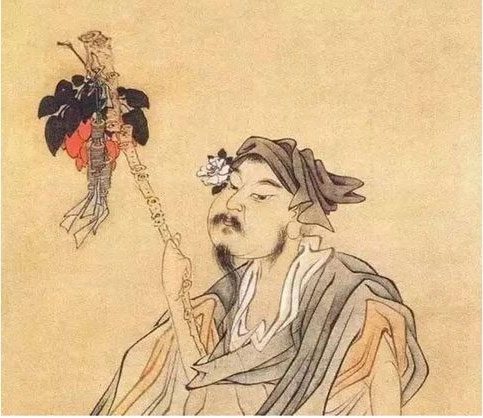
In the Song Dynasty, wearing flowers became an official ritual.
The civil official system of the Song Dynasty developed, leading to the emergence of many cultured scholars. Thus, the custom of wearing flowers became even more widespread. During the Song Dynasty, the practice was promoted as an official ritual by the court. On grand occasions, when the court held feasts, not only did the emperor adorn his head with flowers, but high-ranking ministers were also required to wear different types of flowers according to their rank.
So, what flowers did the Song emperors wear? According to “The Dialogue of the Iron-Walled Mountain,” it is recorded: “One spring, Emperor Shenzong of Song was touring near Jinming Lake and saw peonies presented from Luoyang, which he greatly admired, so he took flowers from his head and adorned himself with a peony measuring one foot and two inches.”
During the Song Dynasty, the emperor most fond of wearing flowers was Emperor Huizong. Although he was not particularly skilled in governance, he was talented in various arts and appreciated elegance. Regardless of whether he was in the palace or out on excursions, he always adorned himself with flowers. The guards and palace soldiers around him also wore large and small flowers of different colors on their hats.
Fragrant, soft flowers placed in the hair of a beautiful young woman naturally do not evoke any strangeness. However, flowers adorning the heads of men have become somewhat of a joke today. Nevertheless, in ancient China, men wearing flowers in their hair was a fashionable and aesthetic practice.


















































